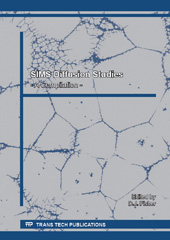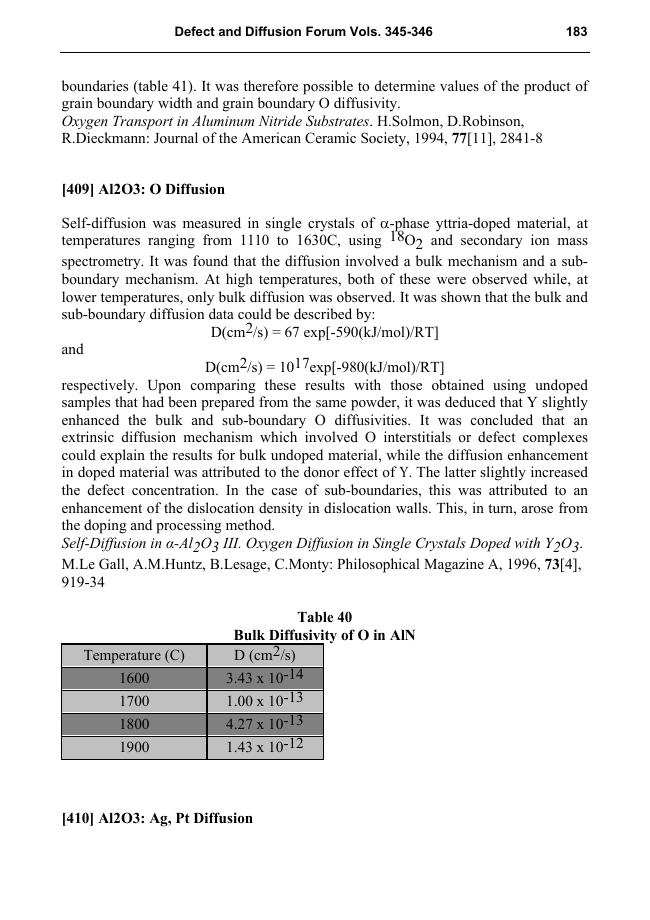2013 - Trans Tech Publications
E-book
Digital Version
Download | Copy/paste | Printing
SIMS Diffusion Studies
450 p.
- During the past 40 years, secondary ion mass spectrometry (SIMS) has become increasingly more popular for measuring diffusivities because it avoids the handling problems, environmental concerns and shortage of suitable isotopes which are associated with the use of radioactive tracer methods. It is the most sensitive of all the standard surface analytical techniques, and is capable of detecting impurity elements at less than 1ppm concentration, and bulk impurity concentrations of around 1ppb in certain cases. The sample surface is bombarded with high-energy ions, leading to the ejection of neutral and charged species. The latter can include atoms, clusters of atoms and molecular fragments. Static SIMS is used for sub-monolayer elemental analysis, dynamic SIMS is used for investigating composition as a function of depth below the surface and imaging SIMS is used for spatially-resolved elemental analysis. Static SIMS plus time-of-flight analysis, rather than the usual quadrupole mass analysis, permits a more exa
- ct quantitative analysis of specimens. The present compilation of nearly 800 items covers a selection of mainly-quantitative results, obtained using secondary ion mass spectrometry, for diffusivities in a wide range of materials. [Publisher's text].
- Special access authorizations may apply; please contact us for further information.
-
Information
ISBN: 9783038263357



